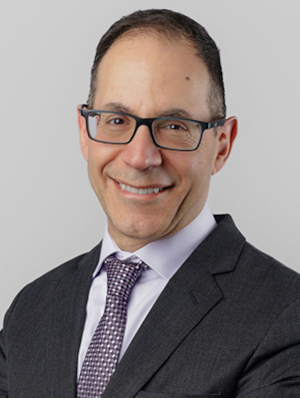Technology has played an ever-larger part in investment portfolios in recent years, given gains in the sector, and family offices are no exception.
A recent global survey of family offices by Goldman Sachs found that 58 per cent of respondents expect to overweight their portfolios in technology in the next year, compared with just 5 per cent who say they will underweight the tech sector. It found that 86 per cent of family offices are investing in artificial intelligence (AI), while 51 per cent use AI in their investment processes.

But pure technology plays raise concerns given significant valuations, experts say, while investments related to building out AI infrastructure come with risks as well as rewards in a broad range of sectors.
“The pendulum is swinging,” says Scott Smith, chief investment officer of Viewpoint Investment Partners, a Calgary-based asset management and private wealth management firm in the family office space. “The strength of the recent equity-market rally, and how well technology stocks have performed, is really leaving people to wonder, ‘Are we in an AI-fuelled bubble?’”
He notes that the high concentration of market cap in just a handful of mega-cap tech names in U.S. equity markets typically presents a worry for investors. “As valuations get more and more stretched and they become more elevated relative to historical norms, the spark that’s required to trigger a pullback is much smaller.”
Smith adds that a new concern is vendor-financing deals that have cropped up in the AI space. “That’s starting to raise some red flags on whether the pace and the demand for AI capital expenditures will be sustainable over the medium or longer term.”
Dan Hallett, head of research for HighView Financial Group in Oakville, Ont., an outsourced CIO for wealthy families, says the firm’s client portfolios “certainly have a healthy exposure to technology, but I wouldn’t characterize it as overweight.” They also have a good amount of exposure to metals, construction, engineering firms and other industries related to data centres, he says, although HighView does not invest thematically.
“There’s always a risk that the hottest sector or industry is overhyped, that prices are pushed up too high, and that there’s overspending in building out an infrastructure,” he explains.
Not every investing firm is an enthusiastic tech believer.
While tech remains a vital part of our diversified portfolio, we see stronger near-term risk/reward in commodities.
Yan Li, Unbiased Portfolio Management
Yan Li, CIO and portfolio manager at Unbiased Portfolio Management, a wealth-management company in Calgary for ultra-high-net worth families, says the firm is underweight technology. This is especially a result of its overweight positions in energy, especially in midstream pipeline companies, and metals, particularly gold mining stocks.
These sectors benefit from technology advances, he notes, with their connections to building and powering AI, but they’re attractive on their own given historical underinvestment and low valuations.

“It’s a matter of portfolio construction. We’re not bearish on tech—in fact, we see its long-term value. However, we’ve made a strategic decision to allocate more to commodity producers, which means reducing exposure elsewhere,” he says.
The primary risk to being overweight technology today is relative underperformance, Li says. “While tech remains a vital part of our diversified portfolio, we see stronger near-term risk/reward in commodities.”
He notes that metals and energy are essential for AI infrastructure, robotics and defense applications. For example, silver is critical for solar-panel production, while uranium, nuclear, natural gas and coal are needed to power AI systems. Meanwhile, he says that bitcoin mining companies have secured deals with AI “hyperscalers,” companies that provide computing infrastructure needed for AI workloads.
Li says Unbiased’s portfolios have also allocated to bitcoin in recent years, and it has been performing well.
“We continue to see bitcoin as a good hedge for monetary debasement that’s likely to accelerate even further, given the impact of AI on society,” he explains, so that even a modest allocation to bitcoin can allow the rest of a portfolio to remain diversified across stocks and bonds. The Goldman Sachs survey found that 33 per cent of the family offices polled now invest in cryptocurrencies, up from 26 per cent in 2023.
Smith is not surprised at the survey finding that the majority of family offices consider themselves overweight in technology, calling it a matter of “fear of missing out” in the space.

“For investors who have shied away from the technology space, or U.S. equity markets, there’s been a lot of pain from a relative performance perspective,” he says.
Those overweight tech include managers with a growth mandate, he says. Most family offices aim to steward capital and avoid unnecessary risks; however, “when the global equity market is up almost 20 per cent and, because you’re underweight tech, your returns are only 10 per cent, that can be challenging.”
Smith says his company is marginally underweight U.S. stocks in favour of international and emerging market equities, which are cheaper and a better value. “Having exposure to international tech names also brings important diversification. There’s lots of interesting names outside of the U.S.”
Smith says the biggest risk to the AI story is not that there will be a crash, like the tech bubble of the early 2000s, but a situation more like the “railroad bubble” of the late 1800s, following a massive overbuild.
“There’s a risk that the AI boom ends up facilitating an over-investment in infrastructure,” he says, “including the build-out of data centres, the compute power that’s needed and energy requirements.”
Smith adds that his firm has direct exposure to commodity futures and is also bullish on energy, “not only for AI and data centres, but just overall.” The construction and equipment needed to outfit data centres, such as air-conditioning units, can be used in other contexts, so such industries “would be more insulated from a broader-base slowdown if we’ve got too much,” he says.
Hallett notes that the Internet 25 years ago brought promises of sweeping change, some of which came true, but “there were a lot of money-losing investments at the time as well. A lot of companies just didn’t survive, and even the ones that did went through a long period where you were underwater as an investor.”
Hallett thinks that in the case of AI, “it’s not going to be a rinse-and-repeat.” Much like with the Internet and other technological innovation over the decades, “the beneficiaries are likely going to be very broad-based, and it’s going to take a long time for that to materialize.”
Some players will benefit from AI in the short term, he says, but “there’s going to be a long list of winners down the road, and it’s going to have a sustained benefit for a lot of businesses,” with many investments linked to the AI theme.
“If you’re exposed to equities of businesses, broadly based, you will benefit from AI,” he adds. “Once invested for a good length of time, you’ll likely benefit from AI without having to make a decision about being overweight or underweight this sector or that sector.”
Mary Gooderham is a writer, editor and communication advisor based in Ottawa. She leads Cohen Gooderham Communications and has worked as a journalist for more than 40 years at The Globe and Mail, as a recording officer at the International Monetary Fund and as a custom content creator for online and print media. She’s been a contributing writer at Canadian Family Offices for four years, focusing on investment strategy, trusts, philanthropy, women in finance and estate planning.
The Canadian Family Offices newsletter comes out on Sundays and Wednesdays. If you are interested in stories about Canadian enterprising families, family offices and the professionals who work with them, but like your content aggregated, you can sign up for our free newsletter here.
Please visit here to see information about our standards of journalistic excellence.




